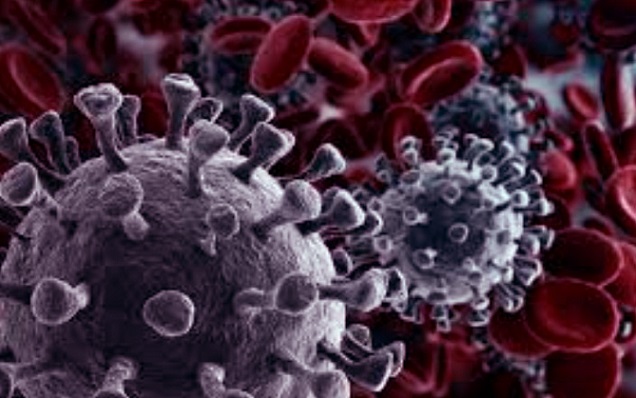Nikhil Prasad Fact checked by:Thailand Medical News Team Nov 07, 2025 1 month, 2 weeks, 3 days, 2 hours, 31 minutes ago
Medical News: Scientists Identify New Viral Factory Structure Inside Infected Cells
A team of researchers from The First Affiliated Hospital of Guangzhou Medical University, Guangzhou National Laboratory, and the Institute of Biophysics at the Chinese Academy of Sciences have uncovered a major breakthrough in understanding how coronaviruses assemble and multiply inside human cells. Their findings reveal that a host protein called HGS (hepatocyte growth factor-regulated tyrosine kinase substrate) forms enlarged compartments within cells that serve as vital “assembly factories” for coronavirus particles in the later stages of infection. This discovery could lead to new antiviral targets aimed at disrupting viral reproduction.
 HGS Protein Found to Be Key in Coronavirus Assembly Inside Human Cells
HGS Protein Found to Be Key in Coronavirus Assembly Inside Human Cells
During infection, the coronavirus hijacks the host’s internal machinery to create specialized compartments where it builds new virions. According to this
Medical News report, the scientists used advanced imaging technologies such as super-resolution live-cell microscopy, electron microscopy, and cryo-correlated light and electron microscopy (cryo-CLEM) to capture the formation of these HGS-positive vesicular compartments. These compartments were found to be distinct from known organelles like the Golgi apparatus or endoplasmic reticulum but appeared to originate from a reorganization of those cellular structures.
Viral Assembly Factories Revealed
The researchers observed that when cells were infected with various coronaviruses—including SARS-CoV-2, HCoV-229E, and HCoV-OC43—the HGS protein began clustering into large, bright vesicular structures. These vesicles then attracted the coronavirus’s structural proteins, including spike (S), membrane (M), and nucleocapsid (N) proteins, confirming that viral assembly was taking place within them. In experiments using virus-like particles, HGS successfully recruited these viral proteins to form complete viral shells.
Using electron microscopy, the team visually confirmed the presence of fully assembled virions within these HGS compartments. In uninfected cells, these vesicles appeared empty, but once infected, they were densely packed with newly formed viruses. The researchers also found that when HGS was absent or genetically knocked out, the cells failed to produce these specialized vesicular compartments, resulting in a drastic drop in viral particle formation.
How the Virus Reshapes the Cell
The study further revealed that these HGS-generated vesicles integrate components from both the Golgi apparatus and lysosomes, essentially forming hybrid organelles that the virus repurposes for mass replication. These structures were especially active during the later stages of infection, suggesting that early viral replication occurs in standard cell compartments like the ER-Golgi intermediate complex, but as infection progresses, the virus forces the cell to remodel itself to meet increasing production demands.
Through detailed 3D reconstructions, the team i
dentified two main types of these compartments—convoluted vesicular compartments (CVCs) and separated vesicular compartments (SVCs)—both of which served as assembly zones for new viruses. Without HGS, these compartments vanished, and the few viruses produced appeared malformed or non-functional, demonstrating the protein’s critical role in viral manufacturing.
A Step Toward Disrupting Viral Factories
This study highlights how coronaviruses exploit HGS to reshape the host’s inner environment, transforming normal cellular organelles into powerful viral production hubs. The authors propose that targeting the HGS-virus interaction could become a new therapeutic approach, potentially halting the virus’s ability to assemble and spread.
The study findings were published on a preprint server and is currently being peer reviewed.
https://www.biorxiv.org/content/10.1101/2025.10.25.684511v1
For the latest COVID-19 News, keep on logging to Thailand
Medical News.
Read Also:
https://www.thailandmedical.news/articles/coronavirus
